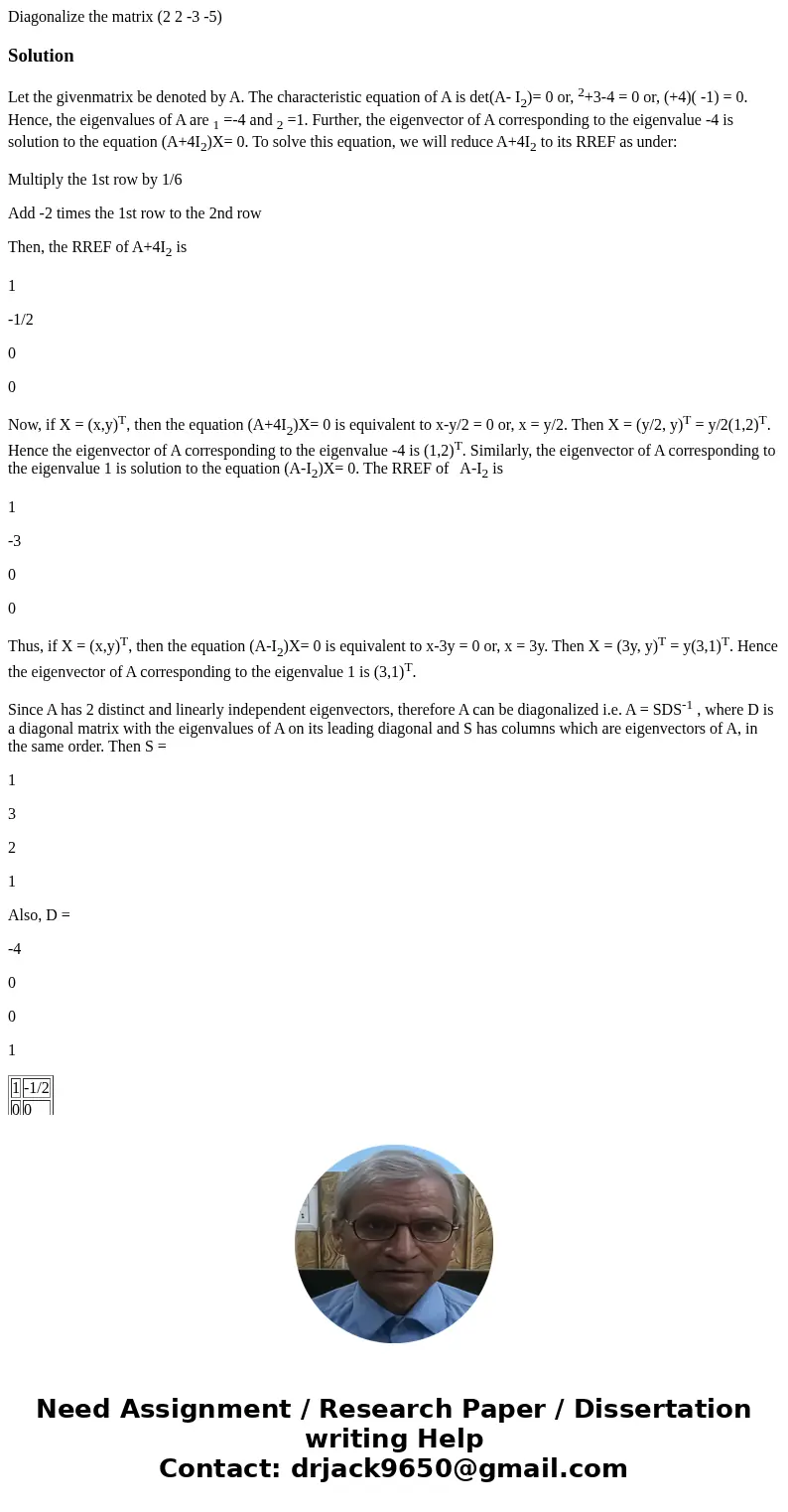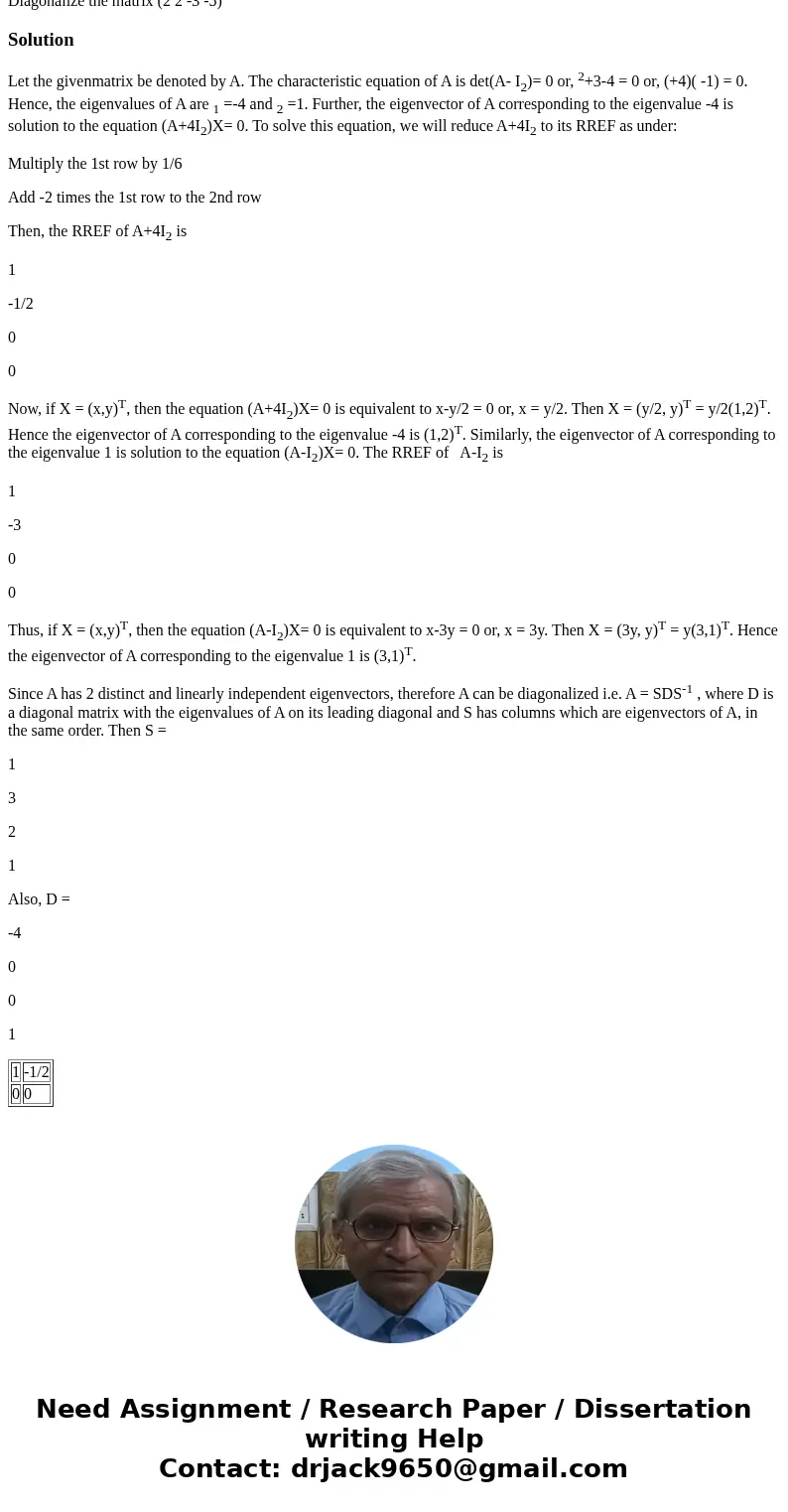Diagonalize the matrix 2 2 3 5 SolutionLet the givenmatrix b
Solution
Let the givenmatrix be denoted by A. The characteristic equation of A is det(A- I2)= 0 or, 2+3-4 = 0 or, (+4)( -1) = 0. Hence, the eigenvalues of A are 1 =-4 and 2 =1. Further, the eigenvector of A corresponding to the eigenvalue -4 is solution to the equation (A+4I2)X= 0. To solve this equation, we will reduce A+4I2 to its RREF as under:
Multiply the 1st row by 1/6
Add -2 times the 1st row to the 2nd row
Then, the RREF of A+4I2 is
1
-1/2
0
0
Now, if X = (x,y)T, then the equation (A+4I2)X= 0 is equivalent to x-y/2 = 0 or, x = y/2. Then X = (y/2, y)T = y/2(1,2)T. Hence the eigenvector of A corresponding to the eigenvalue -4 is (1,2)T. Similarly, the eigenvector of A corresponding to the eigenvalue 1 is solution to the equation (A-I2)X= 0. The RREF of A-I2 is
1
-3
0
0
Thus, if X = (x,y)T, then the equation (A-I2)X= 0 is equivalent to x-3y = 0 or, x = 3y. Then X = (3y, y)T = y(3,1)T. Hence the eigenvector of A corresponding to the eigenvalue 1 is (3,1)T.
Since A has 2 distinct and linearly independent eigenvectors, therefore A can be diagonalized i.e. A = SDS-1 , where D is a diagonal matrix with the eigenvalues of A on its leading diagonal and S has columns which are eigenvectors of A, in the same order. Then S =
1
3
2
1
Also, D =
-4
0
0
1
| 1 | -1/2 |
| 0 | 0 |


 Homework Sourse
Homework Sourse